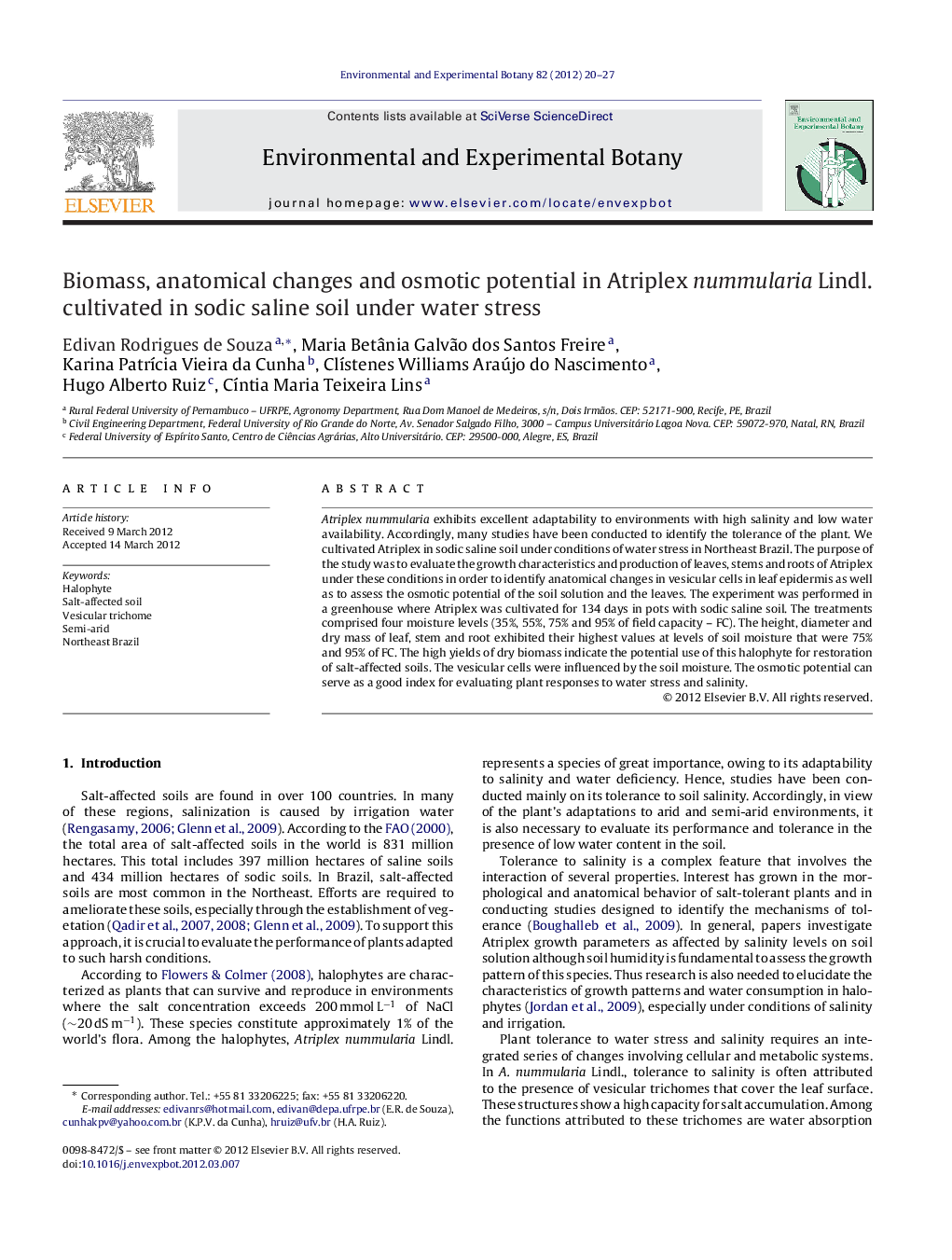| Article ID | Journal | Published Year | Pages | File Type |
|---|---|---|---|---|
| 4554600 | Environmental and Experimental Botany | 2012 | 8 Pages |
Atriplex nummularia exhibits excellent adaptability to environments with high salinity and low water availability. Accordingly, many studies have been conducted to identify the tolerance of the plant. We cultivated Atriplex in sodic saline soil under conditions of water stress in Northeast Brazil. The purpose of the study was to evaluate the growth characteristics and production of leaves, stems and roots of Atriplex under these conditions in order to identify anatomical changes in vesicular cells in leaf epidermis as well as to assess the osmotic potential of the soil solution and the leaves. The experiment was performed in a greenhouse where Atriplex was cultivated for 134 days in pots with sodic saline soil. The treatments comprised four moisture levels (35%, 55%, 75% and 95% of field capacity – FC). The height, diameter and dry mass of leaf, stem and root exhibited their highest values at levels of soil moisture that were 75% and 95% of FC. The high yields of dry biomass indicate the potential use of this halophyte for restoration of salt-affected soils. The vesicular cells were influenced by the soil moisture. The osmotic potential can serve as a good index for evaluating plant responses to water stress and salinity.
► This paper addresses Atriplex management in saline soils under water stress. ► Osmotic potential and anatomical changes in leaves are important in this scenario. ► Water availability increases biomass production of Atriplex in the semi-arid. ► Vesicular trichome on leaves of Atriplex responds to soil moisture.
